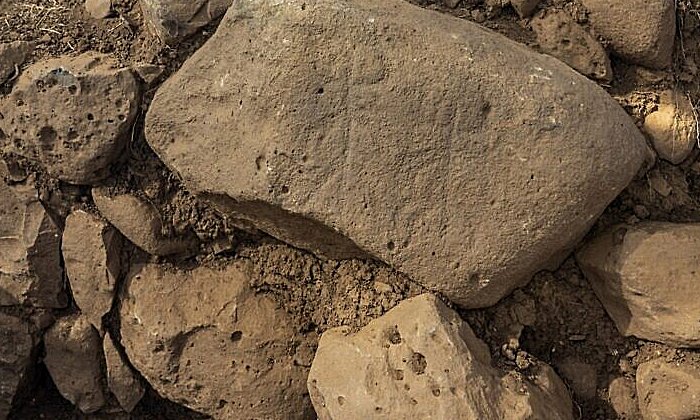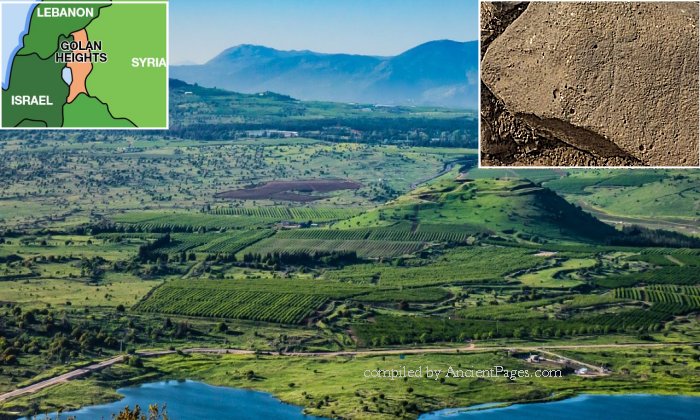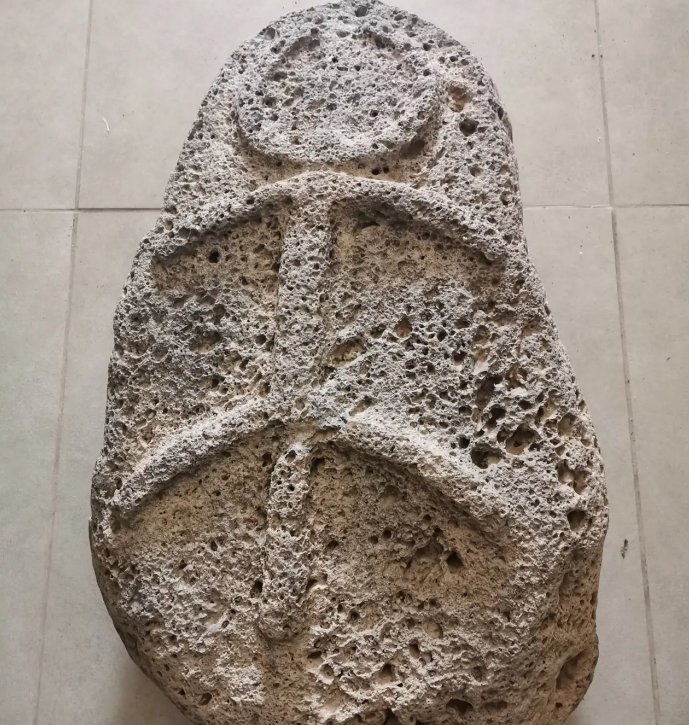Conny Waters – AncientPages.com – Israeli archaeologists have discovered the remains of an ancient fortress from the time of King David (Iron Age, 11th-10th centuries BC) in the Golan Heights.
The find sheds new light on the kingdom of the Geshurit, who, according to the Bible, entered into an alliance with King David.
 The engraved stone discovered in the excavation at Hispin in the Golan, which dates to circa 11th century BCE, and could be the earliest evidence of the biblical ‘Geshurites.’ Image credit: Yaniv Berman, Israel Antiquities Authority
The engraved stone discovered in the excavation at Hispin in the Golan, which dates to circa 11th century BCE, and could be the earliest evidence of the biblical ‘Geshurites.’ Image credit: Yaniv Berman, Israel Antiquities Authority
The 3, 000-year-old fortification was unearthed in the vicinity of the Israeli settlement Hispin in connection with the construction of a new residential complex.
It is believed to have been built by the Geshurites, who according to the Bible, ruled a kingdom in the Southern Golan, and maintained diplomatic relations and family relations with the House of David. In fact, one of David’s wives, Maacah, was the daughter of Talmi, king of Geshur.
The excavation directors, Barak Zin and Enno Bron said that the complex we exposed was built at a strategic location on the small hilltop, above the El-Al canyon, overlooking the region, at a spot where it was possible to cross the river.
 Golan Heights
Golan Heights
Barak Tzin, who led the excavation on behalf of the Israeli Antiquities Authority, estimates that the area covers more than 1, 000 square meters. On the site, there are boulders in basalt about 1.5 meters thick, and are believed to have formed the fortification walls.
During the excavation, a large stone was found engraved with two-horned figures with outspread arms.
It is worth mentioning that in 2019, a figure carved on a cultic stone stele was found in the Bethsaida Expedition Project, directed by Dr.Rami Arav of Nebraska University, at Bethsaida located just north of the Sea of Galilee.
The stele, depicting a horned figure with outspread arms, was erected next to a raised platform (bama) adjacent to the city gate.
 Moon-god stele from the 11th-10th century B.C.E. found at e-Tell Bethsaida. Credit: Hanan Shafir via Haaretz
Moon-god stele from the 11th-10th century B.C.E. found at e-Tell Bethsaida. Credit: Hanan Shafir via Haaretz
According to the archaeologists, it is possible that a person who saw the impressive Bethsaida stele decided to create a local copy of the royal stele.
See also:
Cursed Biblical City Bethsaida May Have Been Found – But Scientists Argue About The Discovery
This scene was identified by Arav as representing the Moon-God Cult. The Hispin stone was located on a shelf next to the entrance, and not one, but two figures were depicted on it.
This is an unusual “puzzle piece” for Golan archaeology, says Barak Tzin.
The kingdom of Geshur may have been more widespread than we know. We just started rediscovering Golan. The fortified city of Bethsaida is considered by scholars, to be the capital of the Aramean kingdom of Geshur.
Research in Golan is not yet at any deeper level, and this unique fortified complex raises new research issues on the settlement of the Golan in the Iron Age.
The feature finds will help to more clearly define the borders of this ancient kingdom. The fort in Hispin is believed to be somewhere in the middle of the kingdom, which, according to Barak Tzin, may have stretched into present-day Syria.
Written by Conny Waters – AncientPages.com Staff Writer





